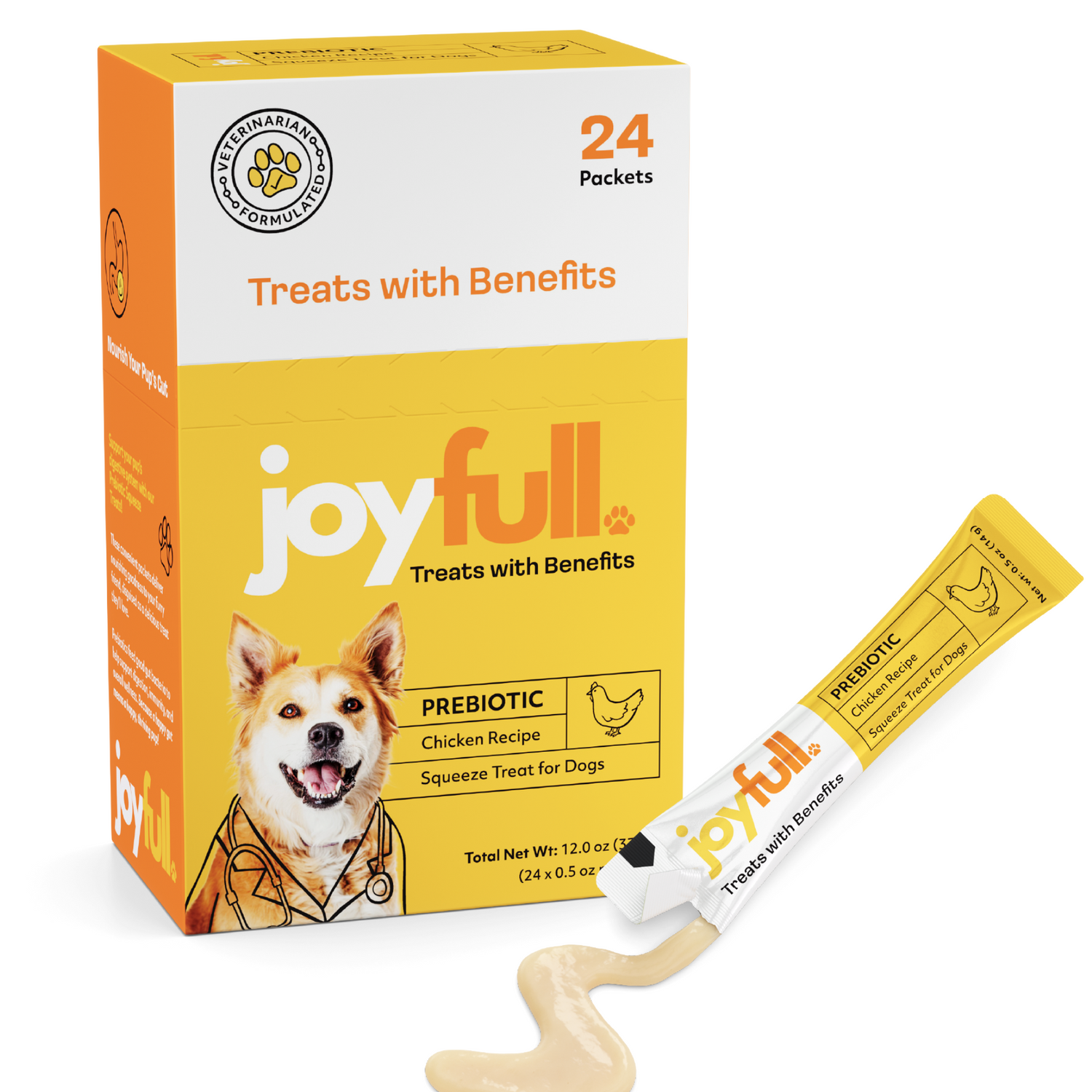
Choosing Dog Food Without Fillers
When you're searching for the best dog food without fillers, you're really looking for a meal where every single ingredient serves a purpose. It's about choosing foods packed with things that actively boost your dog's health, not just fill their stomach.
Think of fillers as the junk food of the canine world. They're the "empty calories" that add bulk to kibble but bring almost nothing to the nutritional table. Over time, a diet heavy in these ingredients can lead to problems like digestive upset and unhealthy weight gain.
So, What Exactly Are Fillers in Dog Food?
To get why filler-free is the way to go, we first need to get a handle on what fillers actually are.
Picture yourself cooking a rich, hearty stew. You’d load it up with quality meat, fresh vegetables, and maybe some nourishing grains like barley or brown rice. Now, imagine you decided to stretch that stew by adding a bunch of plain white flour just to make the pot look fuller. That's pretty much what fillers do in dog food.
Fillers are essentially cheap, low-value ingredients that manufacturers use to bulk up their formulas. They add volume and weight without adding much in the way of real nutrition—things like quality protein, vitamins, or essential minerals.
The "Empty Calorie" Problem for Dogs
The ingredients we typically call fillers are the ones that don't have a clear, beneficial role in a dog's diet beyond just taking up space. While they aren't usually harmful or toxic on their own, having too many of them means there's less room for the good stuff.
Here are a few of the most common ones to keep an eye out for on ingredient labels:
- Corn Bran: This is just the outer shell of a corn kernel. It's mostly indigestible fiber and offers very little nutritional benefit.
- Wheat Mill Run: A dusty by-product from the flour milling process, it’s a low-cost additive with minimal nutritional value.
- Soy Hulls: The outer coating of soybeans, another ingredient that contributes fiber but not much else.
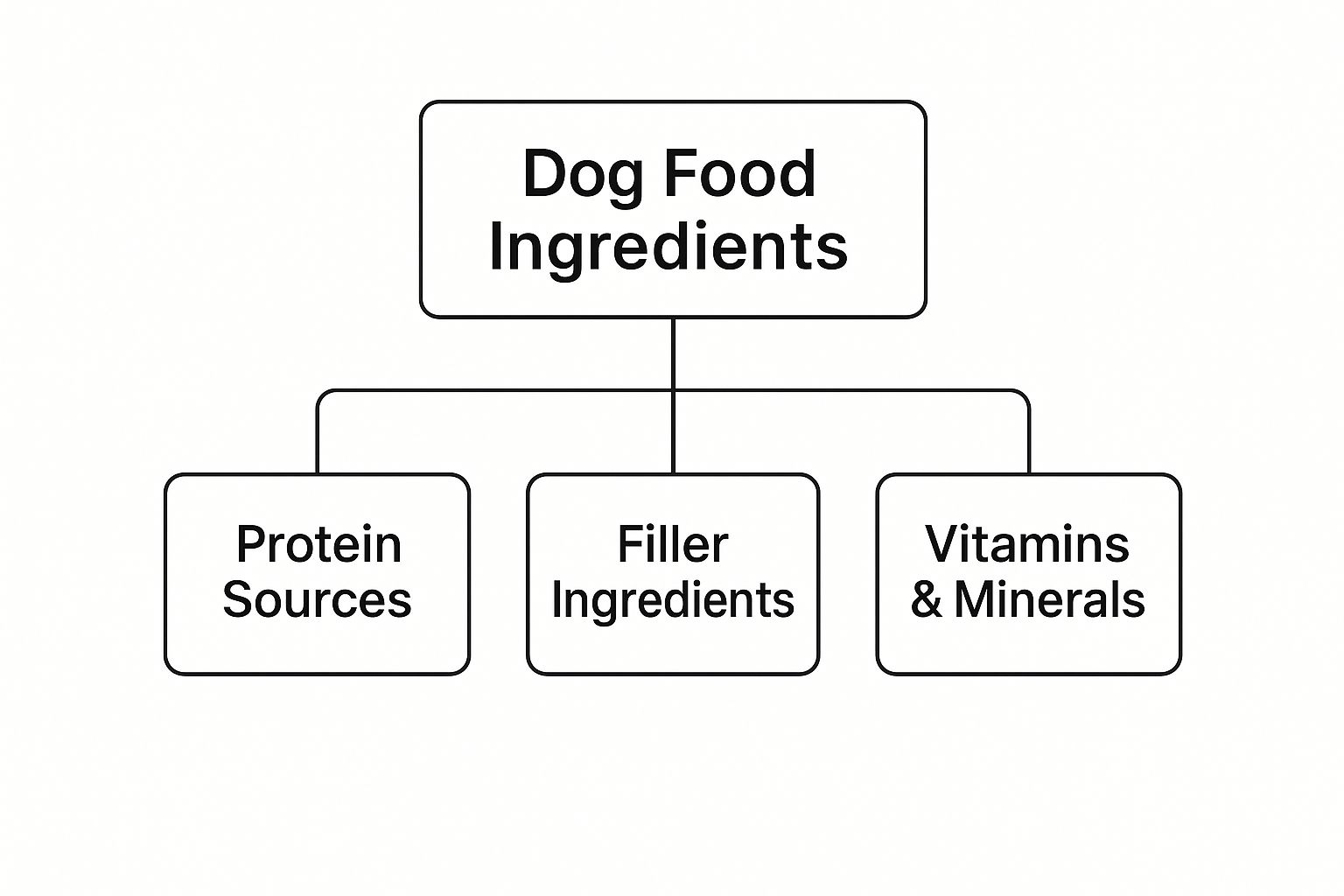
This simple breakdown helps visualize the difference. A truly balanced diet puts high-quality proteins and vital nutrients at the top, leaving no room for ingredients that are only there to add bulk.
Common Fillers vs. Quality Ingredients at a Glance
Sometimes, seeing the good and the bad side-by-side makes it all click. This quick table helps you spot the low-value fillers and know what to look for instead.
| Common Filler Ingredient | Potential Downside | High-Quality Alternative |
|---|---|---|
| Corn Bran | Mostly indigestible fiber, low nutritional value. | Brown Rice, Quinoa |
| Wheat Mill Run | Low-nutrient milling by-product. | Oats, Barley |
| Soy Hulls | Primarily insoluble fiber with few nutrients. | Sweet Potatoes, Pumpkin |
| Artificial Colors | Can trigger allergies, serve no nutritional purpose. | Natural sources like carrots or beet pulp. |
| Animal By-Products | Vague term for low-quality, inconsistent parts. | Named meat meals (e.g., Chicken Meal). |
Swapping out those cheap fillers for whole-food ingredients is the single biggest upgrade you can make to your dog's diet.
Why Fillers Are a Problem
The real issue with fillers isn't just what they are, but what they replace.
Every scoop of food filled with corn bran or soy hulls is a scoop that could have been filled with high-quality protein like chicken or salmon, or nutrient-dense carbs like sweet potatoes and peas. This trade-off means your dog is missing out on essential nutrients, which can lead to a whole host of issues, from poor digestion and skin allergies to weight problems from all those empty calories.
Thankfully, pet owners are catching on. The demand for better food is causing a huge shift in the industry. The global dog food market is expected to climb from $51.27 billion in 2025 to $91.82 billion by 2035, and a huge part of that growth is driven by people like you demanding higher-quality, filler-free options for their pets.
A filler-free diet is built on one simple idea: every ingredient should be in the bowl for a good reason. When you choose a food made with whole, identifiable ingredients, you’re giving your dog the fuel they actually need to thrive, not just the bulk to feel full.
Understanding what's in your dog's food is the first step. If you want to learn more about what to look for, take a look at our guide on the best ingredients in dog food. Learning to spot fillers is a powerful skill that can make a real difference in your dog's long-term health and happiness.
How to Read Labels and Spot Fillers
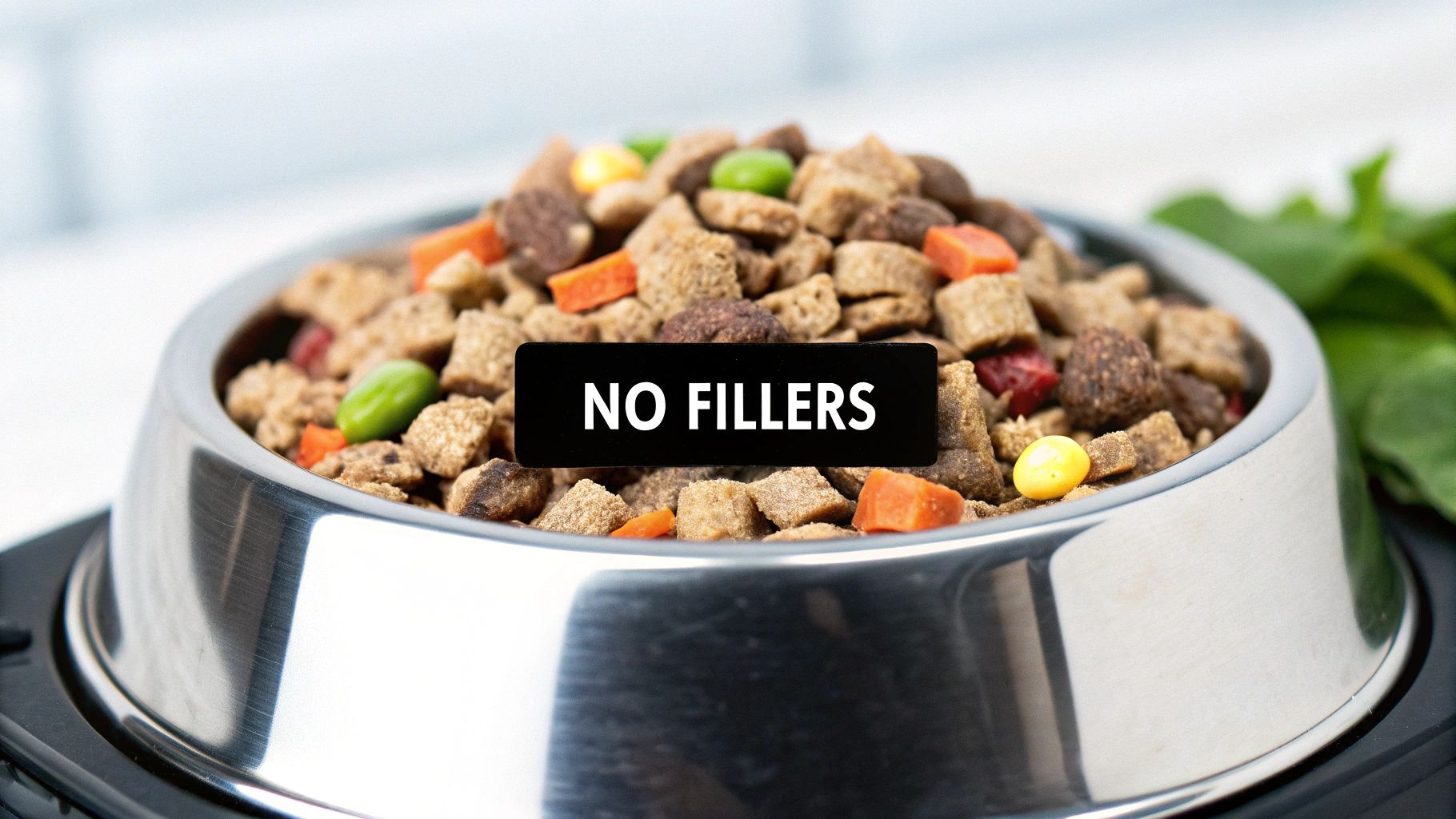
The front of a dog food bag is pure marketing. It’s full of beautiful pictures and tempting words designed to grab your attention. But the real truth—the part that actually matters for your dog’s health—is on the back. Learning how to read and understand that ingredient list is the single best skill you can have when looking for a truly filler-free dog food.
Think of the ingredient panel like a recipe. The ingredients are listed by weight before cooking, starting with the heaviest. This is a strict rule, not a friendly suggestion, so those first few items tell you exactly what makes up the majority of the food in that bag.
The First Five Ingredients Rule
Here's a simple trick I always use: zero in on the first five ingredients. In a genuinely high-quality food, that short list should be packed with recognizable, nutrient-rich protein sources.
What you're looking for are specific, whole foods right at the top. Things like:
- Deboned chicken
- Salmon
- Beef
- Lamb meal
When you see a named meat like "chicken" or "beef" as the very first ingredient, that’s a fantastic sign. It means a high-quality animal protein is the foundation of the meal, which is exactly what your dog is built to thrive on.
Red Flags to Watch For
Just as there are good signs, some ingredients are giant red flags. These are the ones that scream "filler" and often signal that a company is cutting corners to save money, not prioritizing your dog's nutrition.
Be on high alert for these common culprits, especially if they sneak into the top five spots:
- Vague Meat Terms: Words like "meat by-products" or "animal digest" are intentionally obscure. What "meat"? What "animal"? These ingredients come from inconsistent, low-grade sources and are a classic sign of a cheaply made food.
- Corn and Wheat Glutens: These are leftovers from grain processing. Ingredients like corn gluten meal and wheat gluten are cheap ways for manufacturers to inflate the protein percentage on the label without delivering the complete range of amino acids your dog gets from real meat.
- Ingredient Splitting: This is a clever tactic to hide just how much of a cheap ingredient is in the food. A label might list "corn," "corn gluten meal," and "corn bran" separately. If you were to add them all up, "corn" would likely be the #1 ingredient, but by splitting it, they push the good stuff (like chicken) to the top of the list.
The bottom line is this: a quality dog food label is specific and transparent. Vague language and processed leftovers are dead giveaways that the food is built on cost-cutting, not nutrition. Your dog deserves ingredients you can actually recognize and trust.
If you want to become a pro at this, dive into our detailed guide on how to read dog food labels.
Once you know how to spot these marketing tricks and prioritize named, whole-food ingredients, you can see right past the flashy packaging. You'll be able to confidently choose a dog food without fillers based on nutritional facts, not marketing fiction.
What You'll Actually See with a Filler-Free Diet
Choosing a dog food without fillers isn't just about dodging a few bad ingredients. It's about fundamentally changing your dog's health for the better, unlocking a quality of life you can genuinely see and feel. When every single ingredient in their bowl has a nutritional job to do, the transformation can be incredible.
Think about a dog who's always scratching, has a dull coat, and seems to drag after meals. A lot of us just chalk it up to "that's just my dog." But more often than not, the real culprit is a diet loaded with fillers that their system simply can't handle. When you swap those empty calories for nutrient-packed ingredients, you're giving their body the tools it needs to thrive.
A Happier Gut and Better Digestion
One of the first things you'll probably notice is a major improvement in digestion. Filler-free foods are built with high-quality, easy-to-absorb ingredients, which means your dog’s body can pull out more of the good stuff with a lot less work.
When a diet is well-made and filler-free, the body has far less waste to get rid of. This usually means smaller, firmer, and less frequent stools—a clear sign your dog is actually using the food you're giving them.
This change also calms down a lot of digestive upset. Problems like embarrassing gas and bloating, which often come from hard-to-digest fillers fermenting in the gut, tend to fade away. A calmer digestive system makes for a much happier and more comfortable dog.
More Get-Up-and-Go and a Healthier Weight
The kind of calories your dog eats matters, just like it does for us. Fillers give your dog calories, but they don't provide any real, lasting energy. This often creates a frustrating cycle of energy spikes and crashes, leaving your dog feeling sluggish.
On the other hand, dog food without fillers gets its energy from high-quality proteins and healthy fats. This provides a steady, reliable stream of fuel that keeps them going all day, whether they're joining you on a long hike or just want to play a round of fetch in the backyard.
This approach is also a game-changer for weight management. Because the food is more satisfying and nutritionally dense, you can often feed smaller portions while still hitting all their nutritional marks. This is key to preventing the unhealthy weight gain linked to filler-heavy diets and helps your dog maintain a lean, healthy body for the long haul.
Exploring Your Filler-Free Food Options
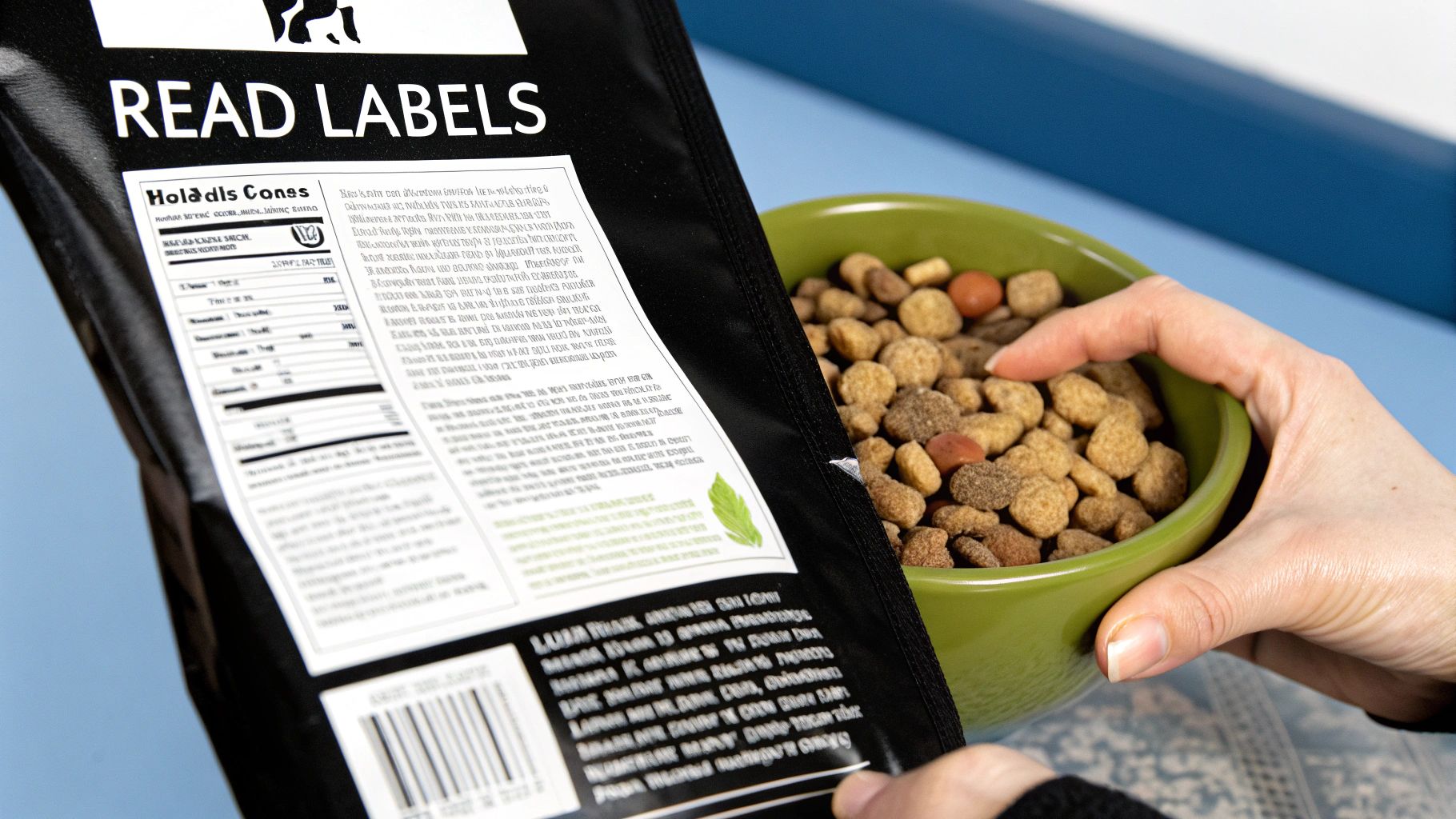
When you decide to choose a dog food without fillers, you’ll quickly discover a whole world of options beyond the standard bag of kibble. The pet food aisle has come a long way. Today, you can find different formats designed to fit your dog's specific needs, your budget, and even your daily routine.
Getting familiar with what’s out there is the first step. The goal isn’t just to find the most nutritious food, but to find one that you can stick with for the long haul.
Premium Dry Food (Kibble)
Let's be clear: not all kibble is created equal. High-quality, filler-free kibble is worlds away from the cheap, corn-heavy stuff. These premium formulas are built around whole meats, quality carbohydrates like sweet potatoes, and healthy fats. For many dog owners, this is the perfect sweet spot, offering great nutrition with maximum convenience.
- What's to love? It has a long shelf life, it's a breeze to store, and portioning is foolproof. Plus, it's usually the most affordable filler-free choice.
- What to watch for? It's still a highly processed food, which might not be the best fit for dogs with extremely sensitive digestive systems.
Canned Wet Food
Wet food is a lifesaver for picky eaters or older dogs who might struggle with crunchy kibble. Its soft texture and rich aroma can tempt even the fussiest canine. A huge bonus is its high moisture content, which is fantastic for keeping your dog properly hydrated.
You can serve it as a complete meal or use it as a "topper" to make dry food more exciting. Just remember to read the label as carefully as you would for kibble—look for real meat as the first ingredient and steer clear of those vague "meat by-products."
Fresh and Refrigerated Meals
Fresh dog food isn't just a trend; it's become a major player in the pet wellness world. These meals are gently cooked to keep nutrients intact and are made with human-grade ingredients you can actually recognize—think real chunks of chicken, carrots, and peas.
The numbers don't lie. Fresh dog food sales shot up by an incredible 86.5% since 2021. Compare that to grain-free food, once the go-to "healthy" choice, which only grew by 4.8% in 2023. This shift shows that pet parents are looking for more than just what's left out of their dog's food; they want to see what wholesome ingredients are put in. You can dive deeper into these dog food trends on Dogster.com.
Fresh food is incredibly easy for dogs to digest, meaning their bodies can absorb and use more of the good stuff. The trade-off? It costs more and takes up valuable space in your fridge or freezer.
Raw Diets (BARF)
Raw diets, often called BARF (which stands for Biologically Appropriate Raw Food), are all about getting back to basics. The idea is to feed dogs a diet similar to what their ancestors would have eaten in the wild, which means a menu of raw muscle meat, organs, and bones. Many raw-feeding advocates talk about seeing incredible results, like shinier coats, cleaner teeth, and a noticeable boost in energy.
- What's to love? It's the least processed option available, packed with natural enzymes and nutrients that can be lost during cooking.
- What to watch for? You have to be extremely careful with food safety to prevent bacterial contamination—for both your dog and your family. It's also pricey and requires a lot of research to make sure you're providing a nutritionally complete diet.
Comparing Filler-Free Dog Food Options
With so many excellent choices, how do you decide? The best option is often a balance between ideal nutrition for your dog and practical reality for you. This table breaks down the key differences to help you find the right fit.
| Food Type | Key Benefits | Considerations (Cost, Storage) | Best For |
|---|---|---|---|
| Premium Dry Kibble | Convenient, long shelf-life, budget-friendly, easy portion control. | Highly processed, lower moisture content. | Budget-conscious owners needing a simple and stable feeding routine. |
| Canned Wet Food | Highly palatable, high moisture content for hydration, soft texture. | Shorter shelf-life once opened, can be more expensive than kibble. | Picky eaters, senior dogs, and dogs that need extra hydration. |
| Fresh/Refrigerated | Excellent digestibility, made with human-grade ingredients, high moisture. | Expensive, requires fridge/freezer space, shorter shelf-life. | Owners prioritizing optimal nutrition and dogs with sensitive stomachs. |
| Raw Diet (BARF) | Minimally processed, rich in natural enzymes, mimics an ancestral diet. | High cost, risk of bacteria, requires careful handling and balancing. | Experienced owners committed to a species-appropriate, natural diet. |
Ultimately, any of these choices is a huge step up from a filler-heavy diet. Whether you land on a premium kibble, fresh meals, or something in between, you’re making a fantastic investment in your dog’s health and happiness.
Making a Smooth Transition to New Food
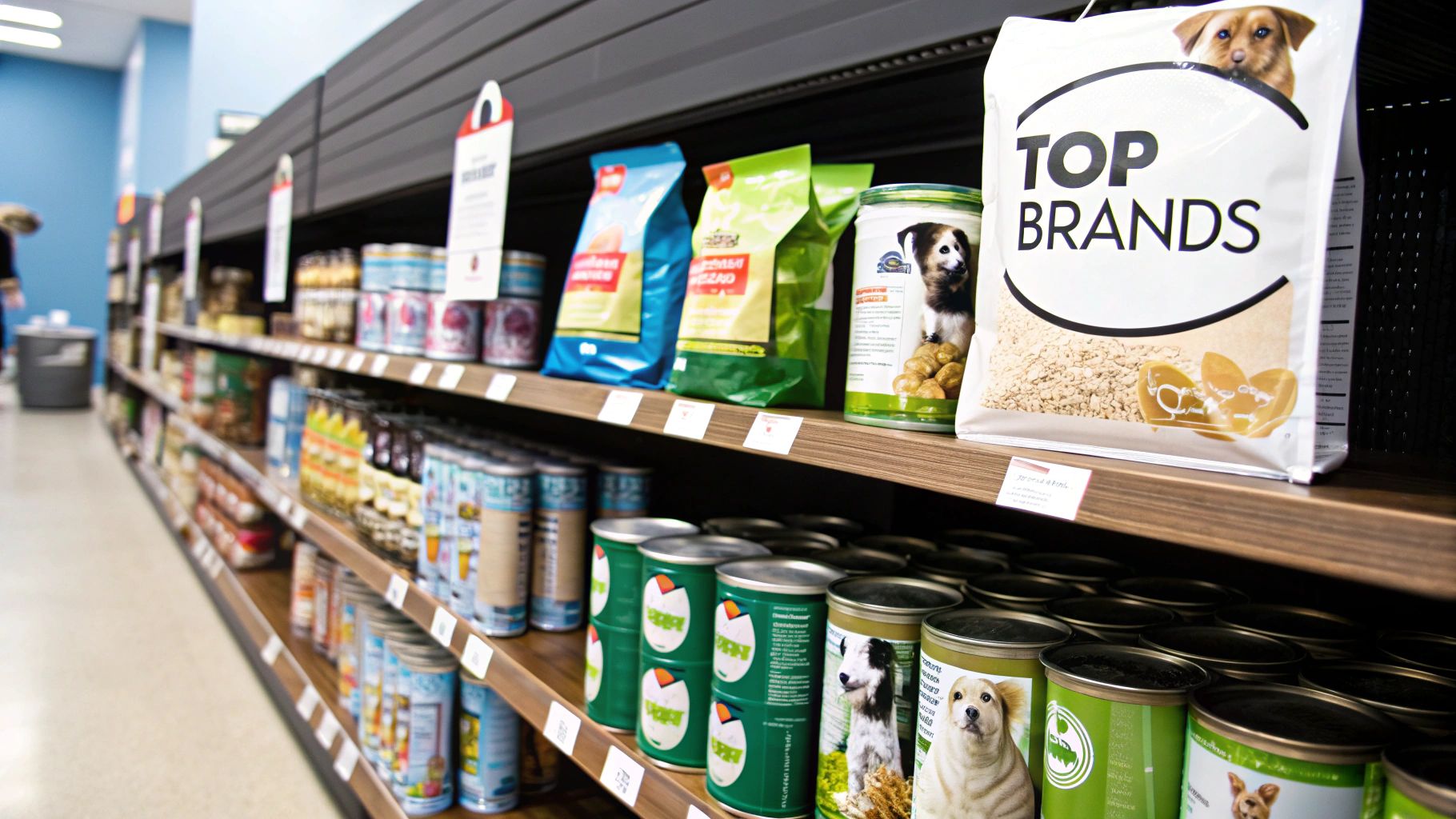
So, you’ve found the perfect dog food without fillers. That's a huge win! But the journey isn't quite over. You can't just swap out their old food for the new one overnight.
A sudden switch is a recipe for an upset stomach—think gas, diarrhea, or even vomiting. The real key to success is a slow, deliberate transition. This gives your dog's gut the time it needs to get acquainted with all those new, high-quality ingredients.
It helps to think of it like starting a new fitness plan. You wouldn't jump straight from the couch into a full-blown marathon, right? Your dog's digestive system needs that same gentle introduction to handle a different nutritional formula without getting overwhelmed.
The 7-10 Day Transition Plan
The best way to do this is with a gradual transition over about a week. This timeline gives the good bacteria in your dog's gut a chance to adapt to the new levels of protein, fat, and fiber. The plan is simple: slowly increase the amount of new food while you decrease the amount of the old stuff.
Here’s a tried-and-true schedule that works for most dogs:
- Days 1-3: Start with a mix of 25% new food and 75% old food.
- Days 4-6: Move up to a 50/50 split of new and old.
- Days 7-9: Now, shift the balance to 75% new food and only 25% old food.
- Day 10: You've made it! Time to serve 100% of the new food.
Remember, this is just a guideline. Every dog is different. If you know your pup has a sensitive stomach, don't be afraid to stretch each stage out for an extra day or two. For a deeper dive into this process, you can read our complete guide on how to transition your dog to new food.
Keep a close eye on your dog during this time, especially their appetite and their poop. Solid, well-formed stools are the best indicator that things are going well. If you see any persistent digestive issues, simply slow down the process and give their body more time.
Tips for Picky Eaters
Of course, some dogs are just naturally suspicious of change. If your furry friend sniffs the new mixture and walks away, don't panic. There are a few easy tricks you can use to persuade them.
Try adding a splash of warm water to their bowl. This little bit of warmth can bring out the food's aroma, making it much more appealing. You could also mix in a tiny spoonful of something they absolutely love, like plain pumpkin puree or a bit of their favorite wet food. Sometimes, that's all it takes to convince them to give it a try.
Answering Your Top Questions About Filler-Free Dog Food
Even after you know what fillers are and how to spot them on a label, a few questions always seem to come up. It's completely normal. Making the switch to a dog food without fillers is a big decision, so let's tackle some of the most common points of confusion to help you feel confident.
Is Grain-Free the Same as Filler-Free?
This is probably the most frequent question I hear, and the short answer is no, they aren't the same thing at all. It’s an easy mistake to make, since cheap grains like corn and wheat are classic examples of fillers.
But here’s the key difference: "Filler-free" means every ingredient in the food has a specific nutritional job to do. "Grain-free," on the other hand, just means there are no grains. To replace those grains, some formulas pack in other starchy ingredients like potatoes or peas in huge amounts—which can act as, you guessed it, fillers.
The real goal isn't just to avoid grains; it's to find a food that's packed with high-quality, functional ingredients. Sometimes that includes healthy whole grains like brown rice or barley. For a deeper dive into this topic, this article on debunking myths and facts about canine diets is a great resource.
Does Filler-Free Dog Food Really Cost More?
Okay, let's talk about the price tag. Yes, a bag of genuinely filler-free food often costs more upfront than the economy brands. But you have to look at the whole picture.
Because these foods are so much more nutrient-dense, your dog gets more nutrition from less food. You'll likely find yourself feeding smaller portions, which means that pricier bag can last longer than you'd expect, closing the cost gap.
Think of it as a proactive investment in your dog's health. Better nutrition can help prevent common diet-related issues like skin allergies, digestive upset, and obesity, potentially saving you significant money on vet bills down the road.
What Does "Human-Grade" Actually Mean on a Label?
This isn't just marketing fluff. "Human-grade" is an official term regulated by AAFCO, and it means two very specific things:
- Every ingredient is edible and safe for people.
- The food is made in a facility that meets the same strict standards as human food manufacturing.
This label is a powerful shortcut to identifying quality and safety. It guarantees the food is free from the low-quality "feed-grade" ingredients and rendered by-products that are all too common in conventional pet foods.
The demand for this level of quality is growing. In 2025, 14% of dog owners are prioritizing human-grade ingredients, while 7% of dog owners are looking for locally sourced, organic options. It's all part of a larger trend toward total transparency in what we feed our pets.
How Can I Tell If My Dog Is Allergic to Fillers?
Food sensitivities can be incredibly frustrating to figure out. If your dog is having a bad reaction to fillers or other low-quality ingredients, the signs often show up in a few key ways:
- Chronic Itching: Are they constantly scratching, chewing their paws, or licking their skin?
- Skin Problems: Look for red patches, rashes, or stubborn hot spots.
- Recurring Ear Infections: This is a classic sign, often accompanied by a distinct yeasty smell.
- Digestive Upset: Persistent gas, loose stools, or diarrhea that just won't clear up.
If any of this sounds familiar, your first call should be to your vet. They can rule out other medical issues and might recommend an elimination diet to nail down the exact ingredient causing the problem. Switching to a limited-ingredient, filler-free food is often a huge part of finding a solution.
At Joyfull, we believe every ingredient should contribute to your pet's wellness. Explore our clean, filler-free formulas and see the difference purposeful nutrition can make. https://joyfullpet.com
